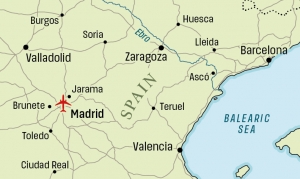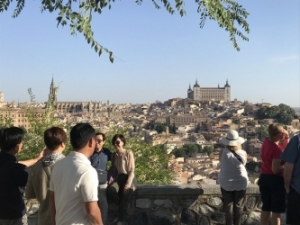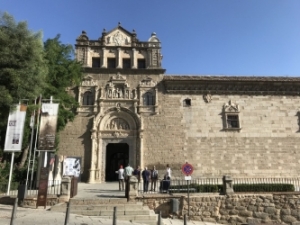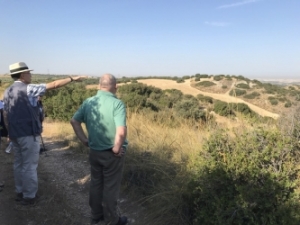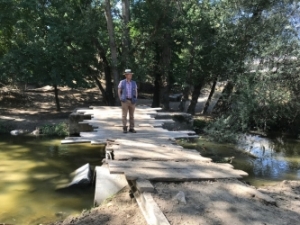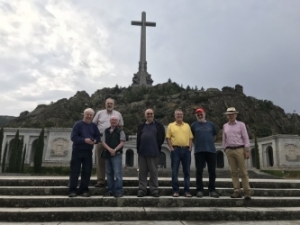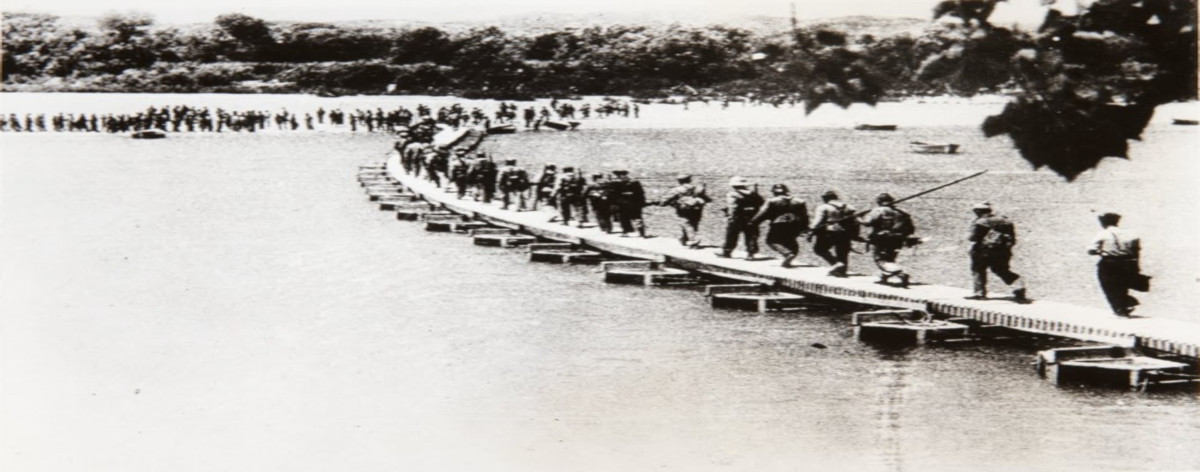
To be confirmed
Tour Introduction
Starting in Madrid this tour explores the main battles that took place on the city’s periphery, in particular the exploits of the British and American volunteers, as the Republicans tenaciously held on to the capital city throughout the war. Admiring civil war inspired art such as Picasso’s Cubist painting Guernica and reflecting on Franco’s former resting place at the Valle de los Caídos we discuss the war’s sensitive legacy to modern Spain. We also visit Toledo with its enormous Alcázar, scene of the dramatic siege, and now a fantastic military history museum, before travelling north to Aragon where we visit the remarkable Cave Hospital at La Bisbal de Falset. We then move to the Ebro valley and stand where opposing sides fought a bloody battle of attrition on the Ebro Front. We also explore the exploits of British and American volunteers who fought determinedly in the International Brigades. The tour culminates in the graceful city of Barcelona where we walk the streets learning about the Civil War in the city.
At the end of each day we will sample some fine Spanish cuisine at well-appointed restaurants, perhaps partaking in a glass of rioja or two over a discussion of the day’s memorable events.
Background
The Spanish Civil War was a particularly bloody conflict that led to the deaths of half a million people, and over 30 years of a dictatorship under Franco, the social and political impact of which is still being felt in Spain today. Starting as what was seen as a purely internal affair, the conflict soon became used by some countries as a ‘dress rehearsal’ for the Second World War. Commentators have gone so far as to say the Second World War started in 1936 not 1939. Yet at the time that was not the prevailing attitude amongst the majority. This view is typical of many governments of the day: “With France and Spain menaced by Bolshevism, it is not inconceivable that before long it may pay us to throw in our lot with Germany and Italy, and the greater our detachment from European entanglements the better.” Sir Maurice Hankey, Cabinet Secretary, 20 June 1936.
The non-interventionist policy towards Spain, which this kind of thinking produced, was adopted by most western governments (apart from Italy, Germany, and Russia), yet in spite of that some 40,000 individuals from around 50 countries volunteered to fight in Spain on the Republican side, and 1,500 foreign nationals, mainly from Britain, Ireland, and Portugal, volunteered to fight for the Nationalists (alongside the very sizeable military contingents from Nazi Germany and Italy). Amongst their ranks were left wing writers such as George Orwell and John Cornford, Winston Churchill’s anti-fascist nephews Giles and Esmond Romilly, and passionate anti-communists like Peter Kemp. Why did they feel so passionately that they left their homelands, many from countries thousands of miles away, to go and fight in a foreign land?
Highlights
- Led by an expert historian and specialist in the Spanish Civil War
- Stay in the amazing cities of Madrid and Barcelona and explore their role in the Civil War
- Visit the battle sites of Jarama and Brunete and learn about the brave contributions made by the International Brigades
- Gain an insight into the continuing controversies of the war at the Valle de los Caídos and in veiwing Picasso’s iconic painting Guernica
- Tour the beautiful city of Toledo and learn about the bitter Civil War siege of the enormous Alcázar
- Spend an entire day touring the dramatic events of the Ebro Campaign
- Enjoy an informative Civil War in Barcelona walking tour
What's Included
- 3 & 4 Star Hotels
- Return flights from London (optional)
- Expert historians throughout providing a daily variety of talks, presentations and Q&A
- Dedicated Tour Manager
- Dinner parties hosted by your expert historians and tour manager
- The company of like-minded travelers
- Helpful and friendly travel advice
- Meals as indicated in the itinerary
- Two drinks i,e wine or beer at each dinner and a welcome drink on first evening
- Entrance fees for sites included in itinerary
- Tour information booklet
- Modern, comfortable, air-conditioned coach
"Here lies half of Spain. It died of the other half."
Mariano José de Larra y Sánchez de Castro
Itinerary
Day 1: fly from London to Madrid or make your own arrangements to join the tour at the hotel. Check-in to our Madrid hotel for five nights. (D).
Day 2: travel by high-speed train to enjoy a day at the historic city of Toledo where we visit the Alcázar fortress. This is the well-preserved site of the famous siege, now a symbol of Spanish nationalism, where José Moscardó Ituarte and his Nationalist Guarda Civil held out against vastly superior numbers of Republican militia despite the capture and subsequent shooting of his son. We have time to visit the town and explore its role in the Civil War. Return to Madrid. (B, D).
Day 3: this morning we visit the Ciudad Universitaria where much of the hard fighting during November 1936 took place and the Parque del Oeste (Western Park) with its extant war-era civilian bunkers. After lunch we view Nationalist positions on the Casa de Campo from which they launched their main assault on the city. (B, D).
Day 4: we travel to Brunete, site of one of the largest battles on Spanish soil, where in July 1937 an 80,000 strong Republican army attempted to alleviate the pressure exerted by Nationalist forces on the capital. After initial success the Republicans were forced to retreat with devastating casualties. Here we learn about the bravery of a British Battalion fighting on the Republican side. We travel to visit the monolithic Basilica of the Valle de los Caídos (“Valley of the Fallen”) built between 1940 and 1958 by the Nationalist government. Until recently this was the location of Francisco Franco’s tomb and the enormous structure still courts controversy to this day. (B, D).
Day 5: today we drive the short distance to the site of the battle of Jarama where in February 1937 Franco’s forces tried to dislodge the Republicans from their positions east of Madrid, with no success. Here we visit the poignant memorial to the International Brigades and walk the ground that the British Battalion, under Captain Tom Wintringham, and later the Lincoln Battalion – their US counterparts, fought over for three dreadful days. After lunch we peruse the privately-owned museum of the Battle of Jarama at Morata de Tajuna with its rich collection of artefacts from the battle. We return to Madrid late afternoon for some free time before visiting the Reina Sofia Gallery to view Picasso’s iconic Guernica painting, produced in the wake of the Nationalist bombing of the Basque town, and infused with Cubist representations of the horrors of the event. (B, D).
Day 6: today we travel by high-speed train from Madrid to Lleida which we reach in 2 hours. This relaxing journey takes us through a stunning Castilian landscape which was so bitterly fought over in the Civil War. From Lleida we travel by coach to one of the most remarkable sites of the entire conflict – the Hospital Cave of Santa Llùcia at La Bisbal de Falset. This was a makeshift Republican field hospital within the cave with over 80 beds, an operating theatre and drug store. We continue to the beautiful riverside town of Ascó on the Ebro, a crucial crossing point for Republican forces in the Ebro battle which we will now explore. Hotel in area – 1 night. (B, L, D).
Day 7: a day exploring the Ebro Campaign, and enormous yet rash advance by Republican forces in 1938 which ended in failure. Some see this as the death knell of the Republic. During the day we will visit several fascinating sites associated with this savage battle and explore the Exposició Guerra Civil La Trinxera museum at Cobrera d’Ebre. Drive to Barcelona late afternoon enjoying the magnificent coastal scenery and moving to the city that was the Republican capital from 1937 and the location of their eventual defeat. Check in to our hotel for one night. (B, L, D).
Day 8: this morning we enjoy an informative Civil War in Barcelona walking tour which will visit many of the sites connected with the conflict in the city. This will involve exploring the narrow streets of the Gothic Quarter and we may get the chance to sip a Granissat in one of the many cafes lining Las Ramblas, Barcelona’s famed pedestrianised boulevard. Around midday we travel to the airport for our flight back to London or perhaps extend your stay in Spain. (B).

